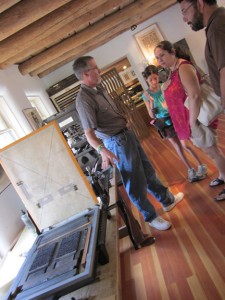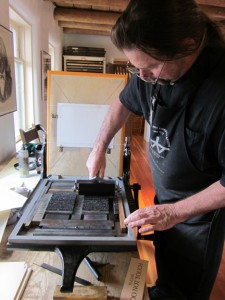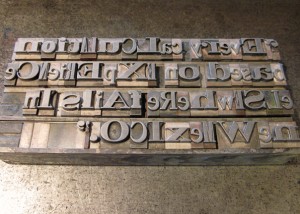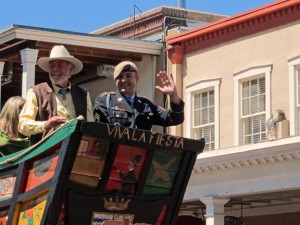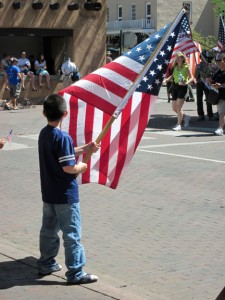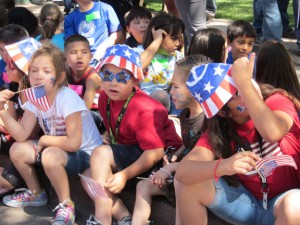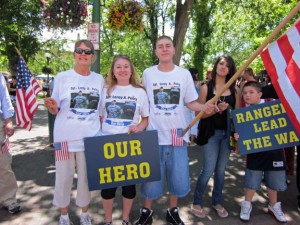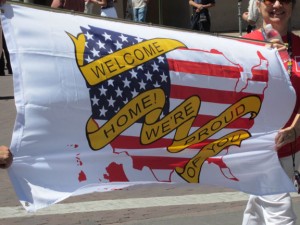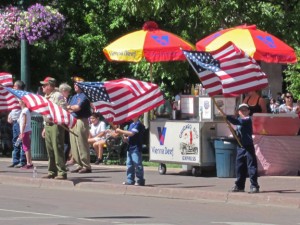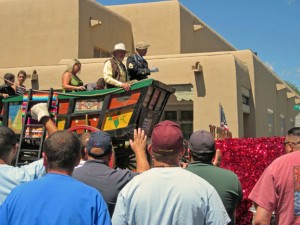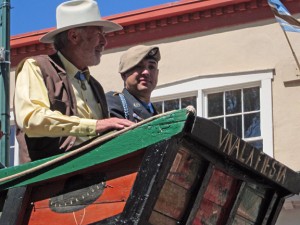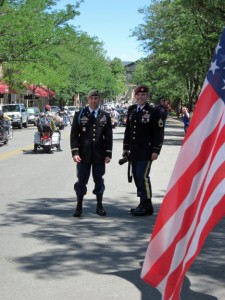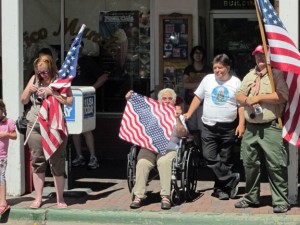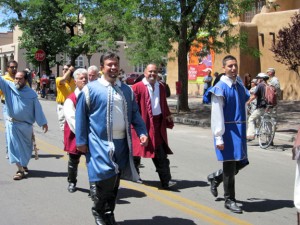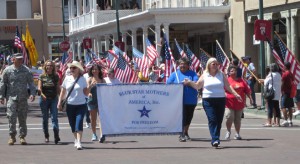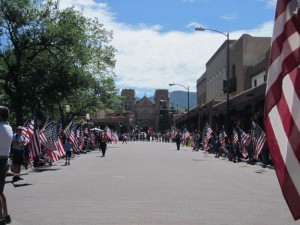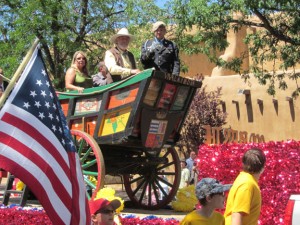Judging by the comment cards that visitors leave at the front desk, the main drawbacks of the History Museum are that it’s too cold and too dark.
If you’ve shivered or squinted, you know what they mean. What’s up?
We talked with Associate Conservator Mina Thompson and Building Manager Emanuel Arnold to get the lowdown on our cave-like conditions.
Start with this: The temperature inside the museum is kept at a constant 72 degrees in the summer, 68 degrees in the winter— give or take a degree.
“Temperatures that are too hot will accelerate the degradation of organic material — plant fibers, like baskets, paper, wood, fabrics,” Thompson said. “Cooler is always better.”
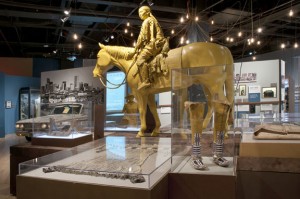 Ideally, she said, artifacts like those in the current Home Lands: How Women Made the West exhibit (at left) would prefer 55 degrees, “but we have to keep a certain level of personal comfort.”
Ideally, she said, artifacts like those in the current Home Lands: How Women Made the West exhibit (at left) would prefer 55 degrees, “but we have to keep a certain level of personal comfort.”
Kicking the temperature up even a notch can reduce the 35- to 40-percent humidity levels also needed to preserve the artifacts. “That’s much drier than other museums,” Thompson said. “Usually, they have 50-percent humidity. But that’s too hard on our mechanical system. And much of our material comes from New Mexico, so it’s not unusual for them to be in a drier climate.”
The wear and tear on the mechanical system was most apparent this summer when wildfire smoke kept Arnold busy.
“I monitored wind directions every day to make sure it didn’t get into the system,” he said. “All the units have smoke detectors and they can shut the whole building down. I had to change the filters several times when ash residue built up.”
Then came the monsoons, which, Arnold said, “kept us nice and juicy.” That’s not necessarily a good thing: Humidity can cause mold and mildew that also damages artifacts. Because of that, the system needed to take the humidity out of the museum, and the process ended up dropping the temperature a little more.
Even without fire and rain, the system works hard to maintain 3½ levels and 96,000 square feet. As it does so, it chews through dollars to pay for natural gas, electricity and water— another reason why Arnold must constantly monitor it for potential cost savings.
None of this applies to the Palace of the Governors, where historic preservation standards and exorbitant costs forbid installing a similar system. The temperature there, Arnold said, can range from 60 degrees in the morning to 90 degrees in the afternoon.
“But most of the stuff in the Palace is acclimated to the Southwest climate,” he said. “The artifacts in the newer building couldn’t handle that kind of temperature swing.”
 As for lights, Thompson said, they pose a serious threat to the long-term health of color-sensitive artifacts – a significant concern when the museum hosted the precious documents featured in The Threads of Memory: Spain and the United States (at left). Most light doesn’t just illuminate an object, it also emits heat and ultraviolet rays that can make colors fade faster as well as change the molecular structure of things as precious as a signature on a historic document. “Once that happens,” she said, “you can’t get it back.”
As for lights, Thompson said, they pose a serious threat to the long-term health of color-sensitive artifacts – a significant concern when the museum hosted the precious documents featured in The Threads of Memory: Spain and the United States (at left). Most light doesn’t just illuminate an object, it also emits heat and ultraviolet rays that can make colors fade faster as well as change the molecular structure of things as precious as a signature on a historic document. “Once that happens,” she said, “you can’t get it back.”
Thompson and museum Director Frances Levine agree that it really isn’t quite as dark as visitors assume. It just seems so because the rest of the museum is so bright.
“Usually, an exhibit that needs to be quite dark will have a couple of transition areas before you get into it so your eyes can adjust,” Thompson said. “It’s very bright here in the lobbies, so it’s hard to get a good transition.”
The best answer to that is patience. Your eyes will eventually adjust to the dimmer light. Your internal temperature control, however, may never adjust to the cool air.
Bring a sweater and keep reminding yourself: It’s for the artifacts’ sake.

